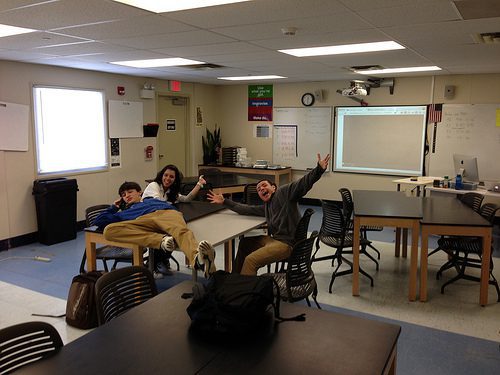When a class gets too small, the students start acting like ‘siblings in the back seat of a car. There is simply no way for the cantankerous kids to get away from one another.’
– Malcolm Gladwell, David and Goliath [57]
 In David and Goliath, Malcolm Gladwell explores how we perceive advantage and disadvantage throughout our lives, and turns many assumptions on their heads. One is the perceived advantage of a small class size.
In David and Goliath, Malcolm Gladwell explores how we perceive advantage and disadvantage throughout our lives, and turns many assumptions on their heads. One is the perceived advantage of a small class size.
Can small be too small?
Throughout my educational journey, my schools claimed class size like it was a prized medal:
- high school: average class size, 13
- college: 9:1 student-teacher ratio
- graduate school: statistics not available (but it was small, too!)
The worst class I ever took (for a variety of reasons) was a high school geography class. Class size: 4.
We were entirely too small. The teacher had not taught before, but the class had been just as bad the year prior with a veteran teacher. It was all on us.
We goofed off.
We plotted and planned.
We delayed assignments.
We came in late. We left early.
We played games.
We crafted a “class project” that involved going to the river (where I broke my toe and we watched a classmate “disappear” under the downtown rapids for a good minute and a half. On purpose.), and somehow managed to make it “academic.”
We weren’t really misbehaving, but we were scheming. We were like the siblings in the back seat of the car. I can probably count on two hands the number of school days we actually had a lesson, because we almost always had a way out.
Are small classes always bad? No, certainly not.
The point: Gladwell is right, sometimes small can be too small. But we sure had fun!


